The BEST time to visit Ireland is probably summer.
But it’s like saying the best restaurant in Dublin is Chai Yo.
Sure, it’s highly rated. But what if you don’t like Asian food?
People have different tastes, so the best time to go to Ireland will depend largely on your desired experience.
Are you desperate for sunshine and warmth? What do you like doing? Do you hate crowds? Are you on a budget? All these factors enter the equation.
So, in this post, I’m going to outline what the Emerald Isle is like throughout the year. Hopefully, it’ll help you decide when is best for you.
Table of Contents
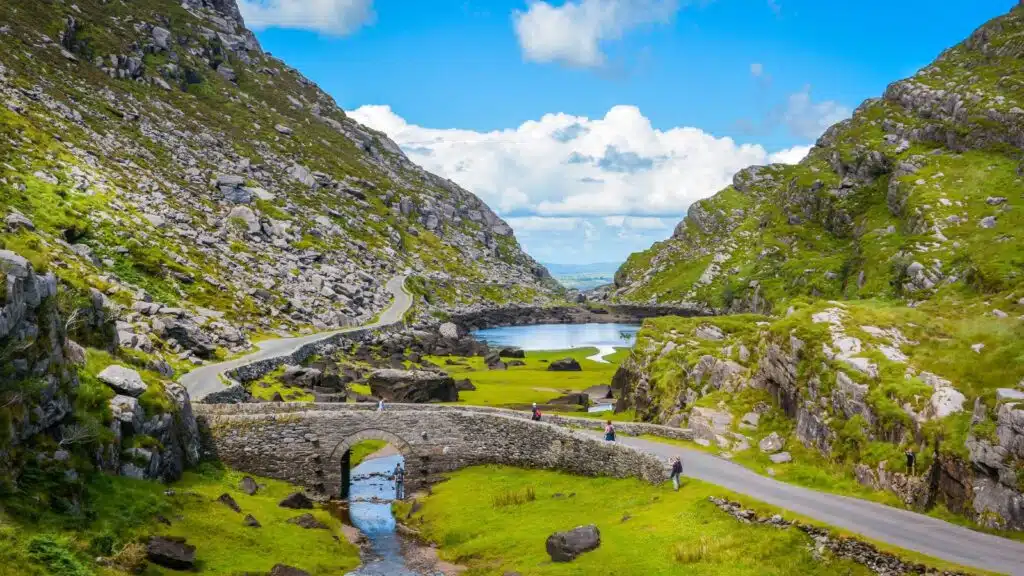
When Is the Best Time to Visit Ireland?
The best time to visit Ireland is summer, between June and September. Yet, that’s only if you’re desperate for the best weather and longest days!
If you hate crowds and want cheap prices, winter would be better. The weather might be awful. But the number of tourists drops because of it, which brings costs down, too.
And for a happy balance? With fair weather and smaller crowds and prices?
Go during shoulder season. Late September through October or mid-April through May could be the perfect time to visit.
However, if you’re there on March 17th, you’ll experience the infamous St. Patrick’s Day. But you’d miss Cork’s world-renowned Jazz festival that happens every October.
See what I mean? There are pros and cons to visiting Ireland all year round. In the next section, I’ll discuss what this beautiful country is like each season.
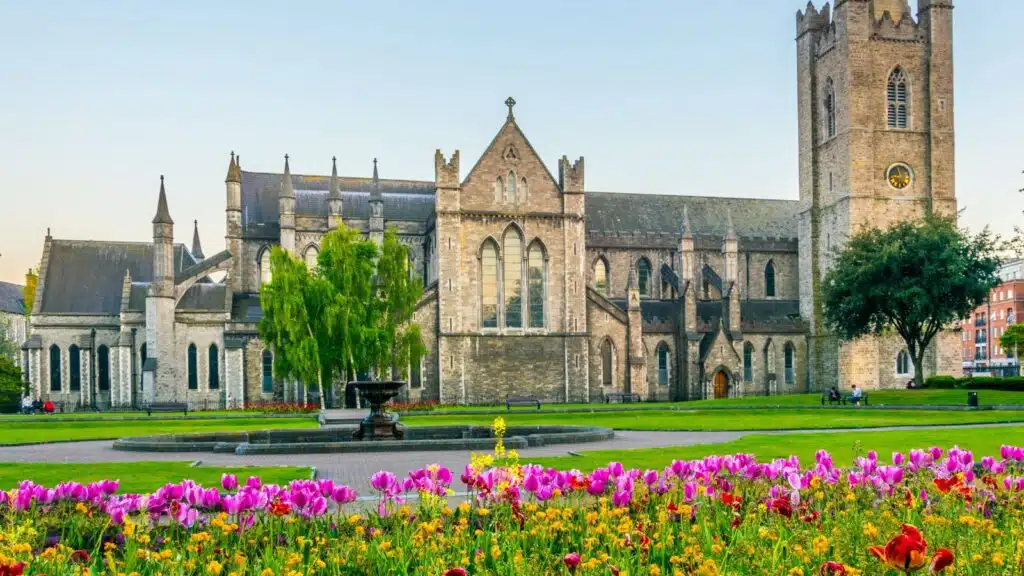
Visiting Ireland Throughout the Year
Ireland in Spring
- Months: March to June
- Highlights: St. Patrick’s Day, vibrant landscapes, outdoor activities, shoulder season perks
- Weather: Warmer than winter, but changeable. Expect a mixture of sunshine, rain, and wind
Spring is a fantastic time to explore Ireland. The temperature warms to around 8 to 12°C on average. Days are drier and longer. And, while it’s a popular period, the tourist season hasn’t fully begun.
Expect fewer crowds at tourist attractions and cheaper prices as a result.
Changeable weather causes Ireland’s beautiful landscapes to burst into life. Flowers bloom, trees blossom, lambs bleat, and lush fields glisten in vibrant shades of green.
The improved weather and glorious landscapes create a paradise for outdoor enthusiasts. You can hike and bike until your heart’s content, although you should expect rain to dampen the fun occasionally.
Throw the antics and excitement of St. Patrick’s Day into the mix, and there’s a strong argument for spring being the best time to visit Ireland.
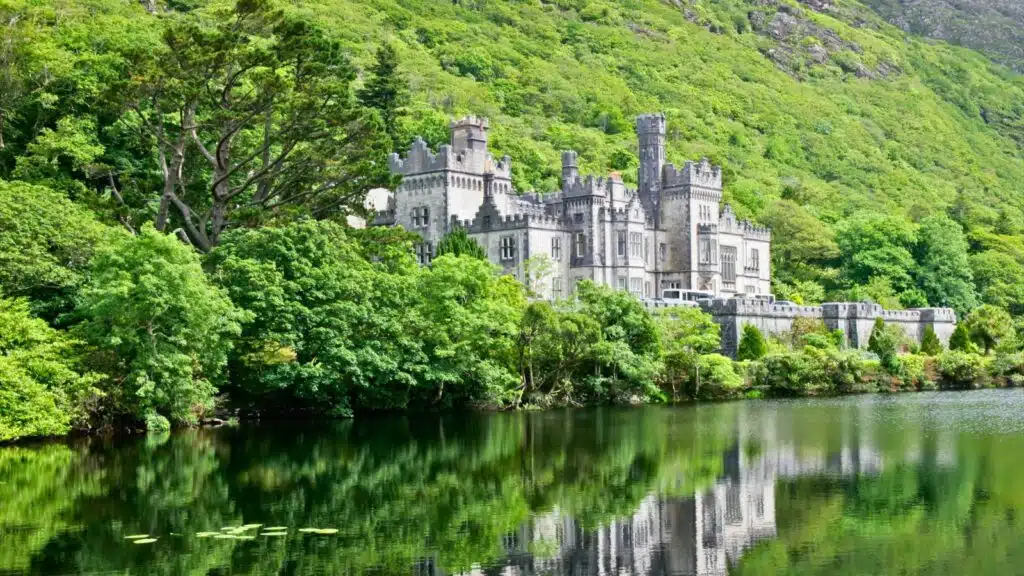
Ireland in Summer
- Months: June to September
- Highlights: Peak season, Good weather, long days, vibrant landscapes, lots to do
- Weather: Warm and sunny days, but rain is always possible
Summer in Ireland is hard to beat, which is why so many people choose to visit at this time of year.
The weather reaches its warmest (15 to 20-25°C), and the sun shines. The days are also longer, which creates more time to explore. It still rains frequently, but the average monthly rainfall is significantly less than in late autumn, winter, and early spring.
Obviously, good weather and more daylight make travel more fun. You can go hiking or walk around a city without worrying as much about getting wet.
During peak season, the landscapes are greener than ever, beach days become more viable, and Ireland’s biggest attractions, such as its countless castles and the Cliffs of Moher, shine.
There are masses of things to do between June and September, as well.
Ireland’s calendar of summer events and activities is chock-full. The Galway Races and endless music and arts festivals (including the Kilkenny Arts Festival) take place.
The downside of visiting Ireland in the summer months is how busy it gets. From Dublin to Galway to the Ring of Kerry, expect crowds! The high season brings increased prices for accommodation and activities, making it an expensive time to visit.
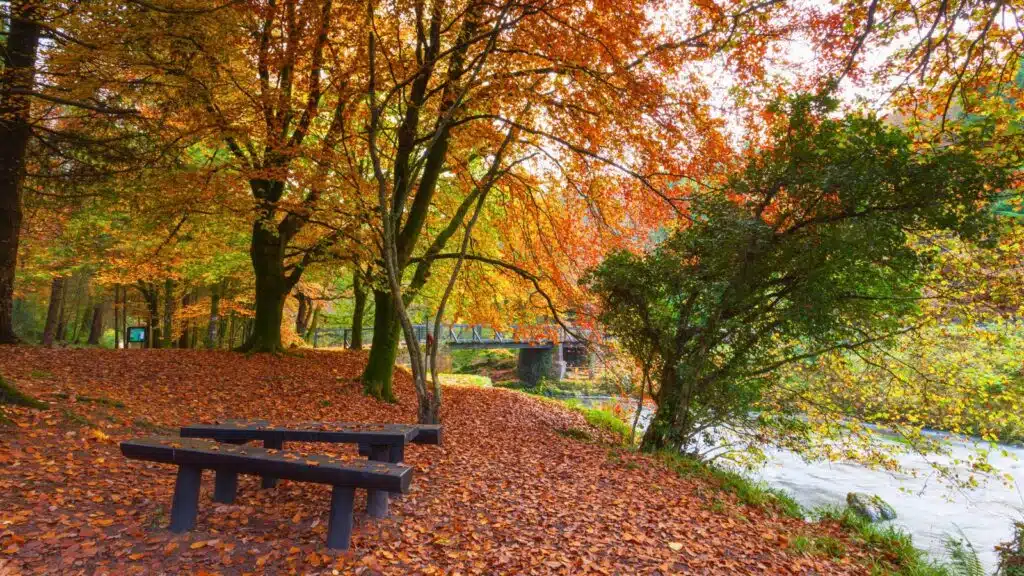
Ireland in Autumn
- Months: September to December
- Highlights: Reasonable weather conditions at the start, stunning fall foliage, and lots of seasonal things to do
- Weather: Gets worse throughout the season, but it’s not too bad until November
Visiting in Autumn has benefits similar to spring. Peak season’s over, so the crowds thin and prices drop.
October weather is pretty good, too. However, as the calendar moves into November, temperatures drop (think 6 to 15°C), it starts raining much more, and the days get shorter.
When you combine those changes, it can limit how much you do—especially if you wish to go outside and stay dry!
This isn’t all negative, though.
For example, Ireland always has an enchanting vibe. But Autumn colours create an even greater sense of magic. Expect forests alight with orange and gold, raging rivers and waterfalls, and much more.
In other words, it may be wet outside, but it will be beautiful. There’s also an abundance of wildlife in Autumn. Expect herds of wild deer, countless birds, and whales swimming off the coast.
Another benefit of visiting Ireland in Autumn is the number of festivals and events that take place. This is harvest time, and the markets and restaurants take full advantage of all the fresh local produce.
In terms of events, you have the Cork Film Festival, Cork Jazz Festival, Traditional Music Festival, and many more to enjoy.
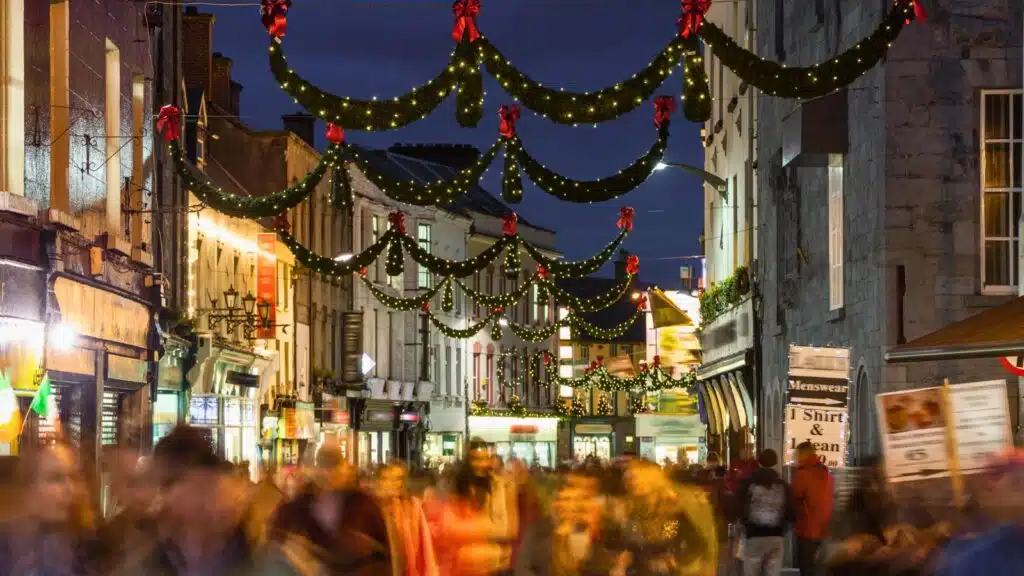
Ireland in Winter
- Months: December to March
- Highlights: Off-season crowds and prices, cozy vibes, pub culture, and holiday events
- Weather: Cold, wet, rainy, and occasionally snowy!
Winter is Ireland’s quietest month in terms of tourism, mainly because of the colder weather.
It goes without saying, but don’t visit between December and March if you’re looking for sunshine and blue skies!
Ireland’s winter months call for warm and waterproof clothes. The nights are long, and the days tend to be wet and cold.
However, Ireland is always beautiful, and unpredictable weather can add to its allure. It feels raw and untamed. Furthermore, low-season is less crowded, and prices don’t get any lower.
The bad weather also pulls you into traditional pubs, where you can sit around a roaring fire, listen to Irish music, and sip a Guinness or Irish whisky. There are cozy vibes that you don’t get in other seasons.
Oh, and those dark nights have a silver (or luminescent green) lining. If you’re in the right place at the right time, you can see the Northern Lights. Donegal and Achill Island are good places to see them.
Throw in the winter markets and festive atmosphere, and there are plenty of compelling reasons to visit Ireland in winter.
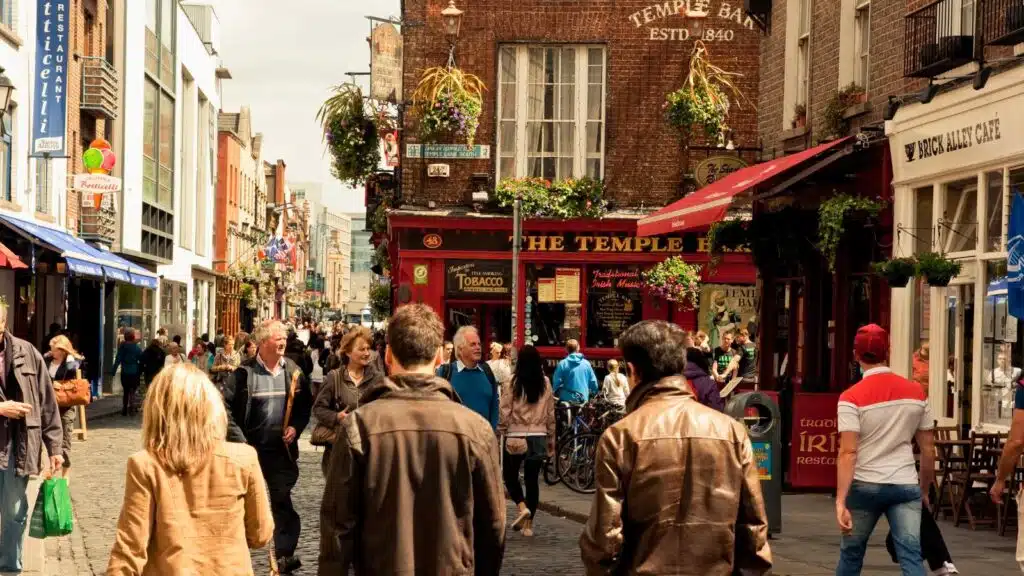
Want to Explore Ireland with Others?
Organising transport, finding accommodation, and deciding what to do in Ireland can be a pain when there’s so much to see.
Consider joining one of G Adventures’ small group tours for a more straightforward way to see the country’s highlights.
Their Highlights of Ireland tour hits all the major sights, including Giant’s Causeway, Galway, and the Ring of Kerry. They also have an Iconic Ireland tour that sticks to the Republic of Ireland and a Castles Folklore & Gaelic Traditions tour for families.
Each one takes you to a curated list of top Irish attractions and handles your transport, accommodation, and activities.
In other words, you get an epic trip to Ireland with zero hassle.
You’d be in good hands. G Adventures is a trusted tour company that’s been a leader in small-group adventure travel for almost 30 years.
They take people all over the world, using local guides to showcase the very best of each country. Expect unique experiences in stunning destinations, with logistics taken care of and a group of like-minded companions to share the adventure with.
Here’s a Reddit thread where people who have been on their tours discuss what they liked/disliked.
Click here to learn more about their trips to Ireland and to book your adventure!
The Best Time to Explore Ireland Is Up to You
I can wrap up this post with good news and bad news. The bad news is that I can’t tell you when the best time to visit Ireland is. I think it depends on what you want from your trip.
The good news is there’s no “bad time” to visit. Whenever you explore the Emerald Isle, you’ll find dozens of factors that make it special.
Have more questions about when to go? Comment below and I’ll try to help! In the meantime, check out this post full of things to do on your Irish adventure.